On June 3, 1853, four ships of Perry’s fleet arrived off the coast of Uraga. Perry’s objectives were to “open Japan to the outside world,” “protect American sailors in distress,” “secure a port for the supply of firewood, water, and food,” “obtain permission to establish a coal depot,” and “commerce (trade).
Perry, through gunboat diplomacy, demanded that the Shogunate receive a letter of invitation from President Fillmore. The Bakufu acquiesced, received the letter at Kurihama, and agreed to a one-year reprieve.
Perry left Japan, announcing that he would return the following year, but returned to Uraga on January 16, 1854.
On February 10, Perry landed at Yokohama with his troops, and after four rounds of talks, the Treaty of Friendship between Japan and the U.S., which did not include trade, was concluded on March 3.
Yoshida Shoin decided to stow away abroad, partly on the advice of his mentor Sakuma Shozan (Shozan).
On March 27, Shoin rowed out in a small boat with his disciple Kaneko Shigenosuke and requested to board the Pohatan. Shoin pleaded with Commodore Perry to go to the U.S., but was unable to obtain Perry’s approval. He surrendered to the Shimoda Magistrate’s Office and was imprisoned in the Denmacho Prison.
This exhibition presents about 35 historical documents to tell the true story of Perry’s arrival in Japan and Shouin’s life.
Exhibition
2024 Exhibitions
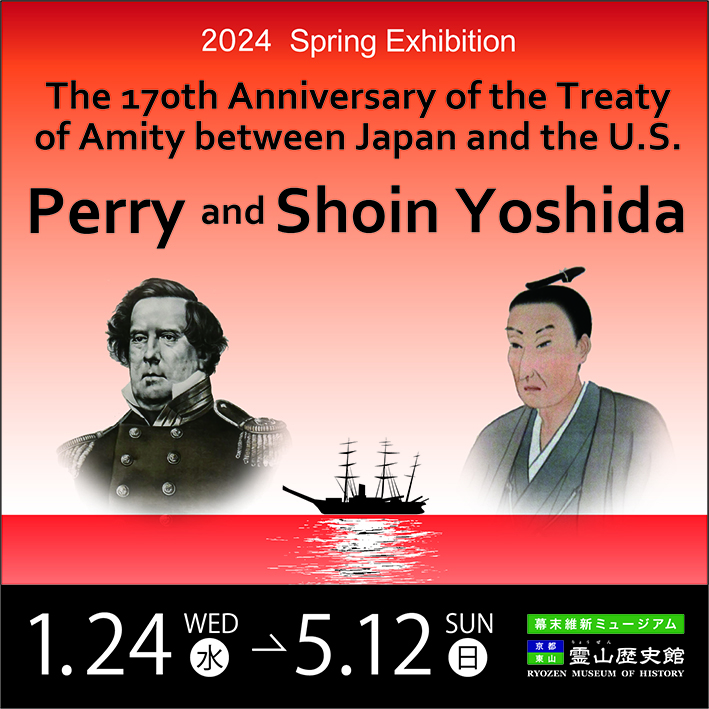
2024 Spring Exhibition
The 170th Anniversary of the Treaty of Amity between Japan and the U.S.
Perry and Shoin Yoshida
24th, January 2024 - 12th, May
2023 Exhibitions
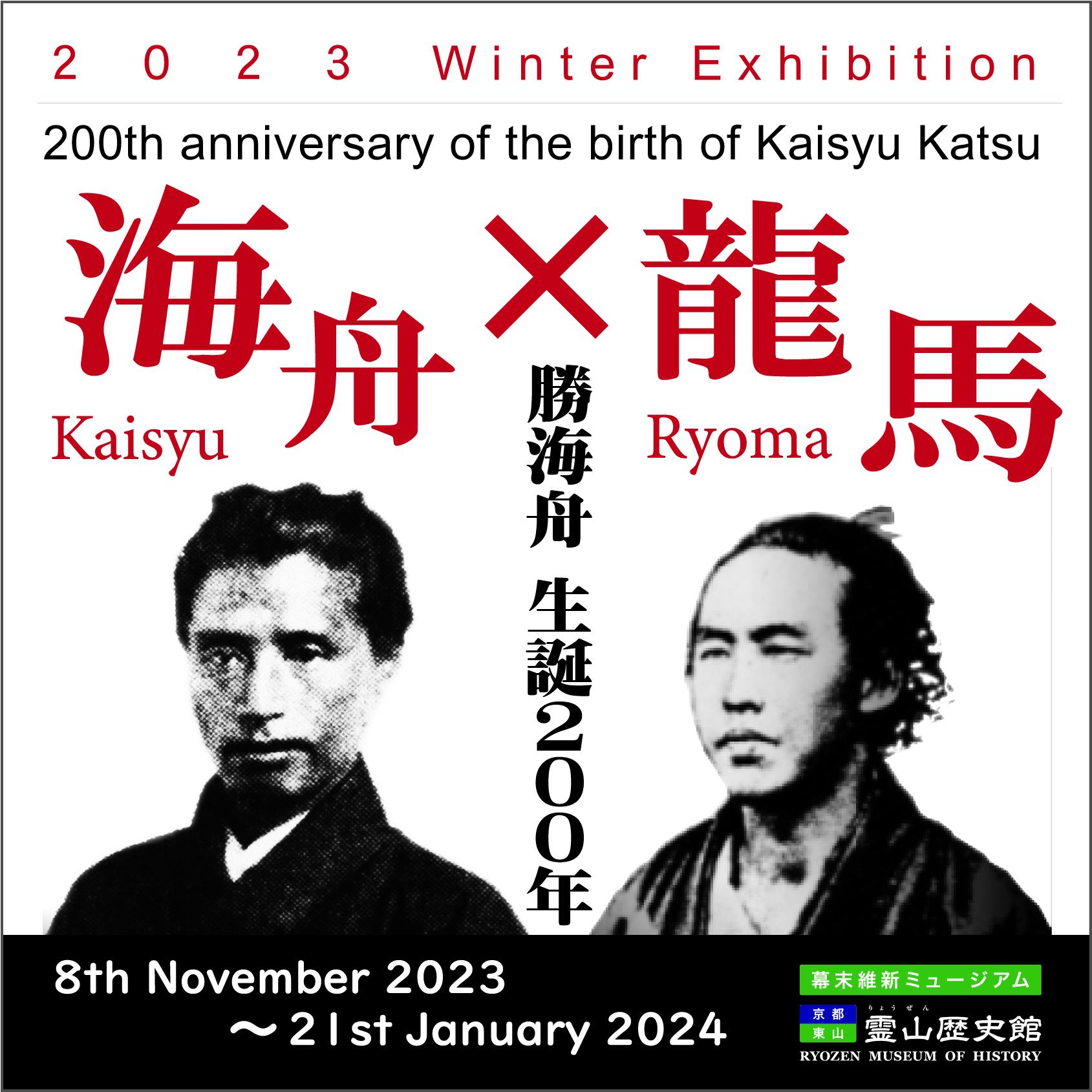
2023 Winter Exhibition
200th anniversary of the birth of Kaisyu Katsu “Kaisyu X Ryoma”
Kaishu Katsu was a shogunate vassal of the Kaimei school, and it is no exaggeration to say that the encounter between Kaishu and Ryoma changed the history of the end of the Edo period.
Ryoma was a Tosa samurai who had deserted his domain, but by becoming Kaishu’s disciple, he was able to meet top-notch people and engage in free-spirited activities.
On the other hand, Kaishu led the peace conference of the Second Shogunate’s War, the “Itsukushima Talks,” and the bloodless surrender of Edo Castle with success, leaving achievements comparable to those of Ryoma.
In this special exhibition, we will follow the footsteps of Kaishu and Ryoma.
8th November, 2023 – 21st January, 2024
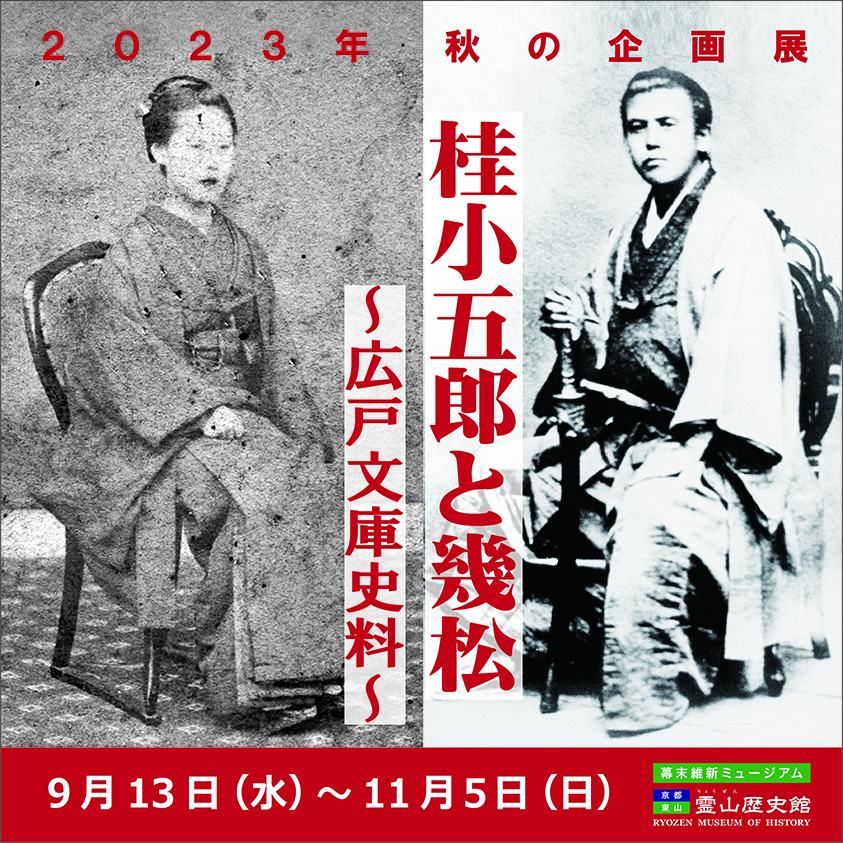
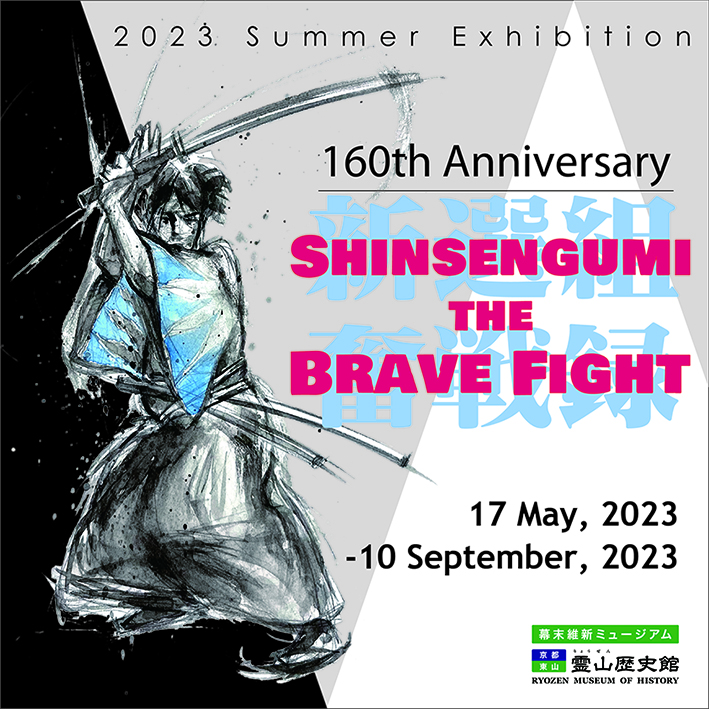
2023 Summer Exhibition
160th anniversary “Shinsengumi the Brave Fight”
This year marks the 160th anniversary of the formation of the Shinsengumi.
In March 1863, when the 14th shogun, Iemochi Tokugawa, was scheduled to go to Kyoto, the shogunate sent roshi(masterless samurai) from Edo to Kyoto in advance to restore public order and protect the shogun. Those who remained in Kyoto became the “Kyoto Shugoshoku Mibu Roshigumi”, and was given the name “Shinsengumi” in recognition of their work in the “Coup of August 18”.
The Shinsengumi fought bravely in the “Ikedaya Incident”, “Kinmon Incident”, “Zenzaiya Incident”, “Sanjo Seisuda Incident”, “Abura Koji Incident”, “Tenmaya Disturbance”, and “Battle of Toba-Fushimi”. . this exhibition traces that history.
17 May, 2023 -10 September, 2023
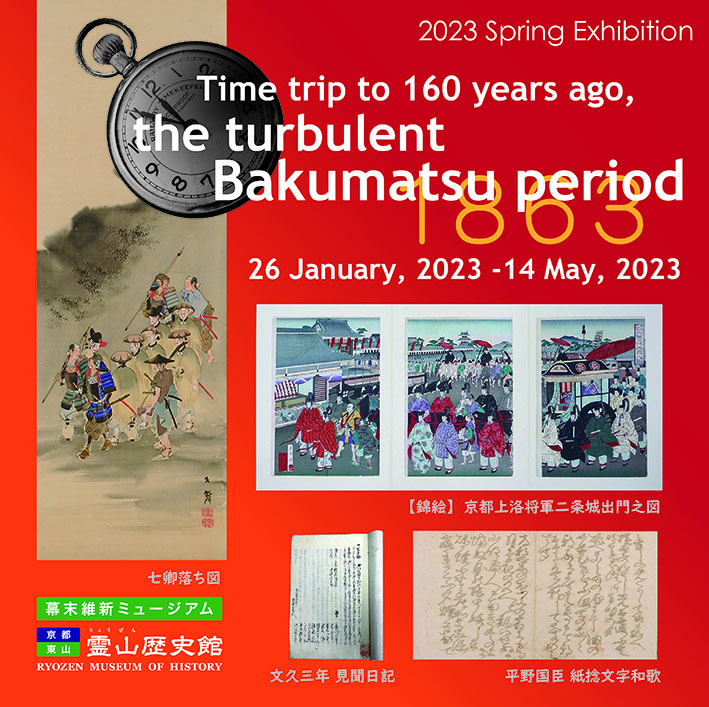
2023 Spring Exhibition
Time trip to 160 years ago, the turbulent Bakumatsu period
Bunkyu 3 (1863), 160 years ago, was a turbulent year.
“Uta Nagai, a senior vassal of the Choshu clan, was forced to commit seppuku.”, “The shogun Iemochi Tokugawa enters Kyoto for the first time in 229 years.”, “Hachiro Kiyokawa was assassinated.”, “formed Kiheitai”, “Anglo-Satsuma War”, “Tenchu-gumi attacks the magistrate’s office in Yamato Gojo (Tenchu-gumi Incident)”, “Coup on August 18 and the downfall of the Seven Lords”, “Serizawa Kamo was assassinated”, “Ikuno Incident”…
War, coup d’etat, and bloody incidents occurred frequently.
It is an exhibition that allows you to travel back in time to 160 years ago.
26 January, 2023 -14 May, 2023
2022 Exhibitions
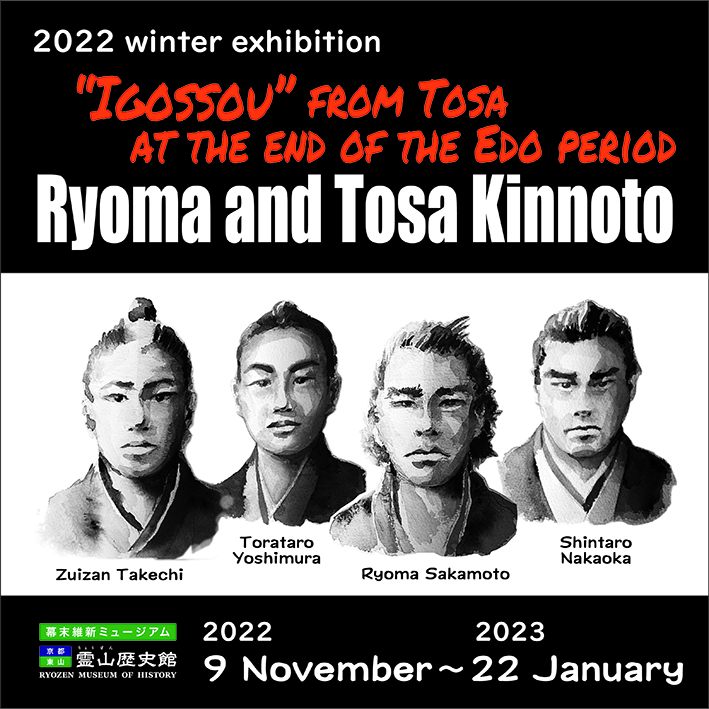
Winter Exhibition
“Igossou “ from Tosa at the end of Edo period. “Ryoma and Tosa Kinnoto”
“Igosso” means “a man with grit and fortitude” in the Tosa dialect. The Tosa Kinnoto was formed in August of 1861 by Zuizan Takechi (Hanpeita) and Yataro Oishi at the residence of the Tosa domain in Edo. Takechi tried to convert Tosa’s theory of the domain, which had advocated the combination of the imperial court and the shogunate, into one of ‘one domain’s loyalty to the emperor’. After Takechi returned to Japan, Ryoma Sakamoto was the first to call for membership, and at its peak there were nearly 200 members. In this special exhibition, we will introduce the achievements of The Tosa Kinnoto and Tosa people who worked hard to overthrow the Shogunate.
9 November, 2022 -22 January, 2023
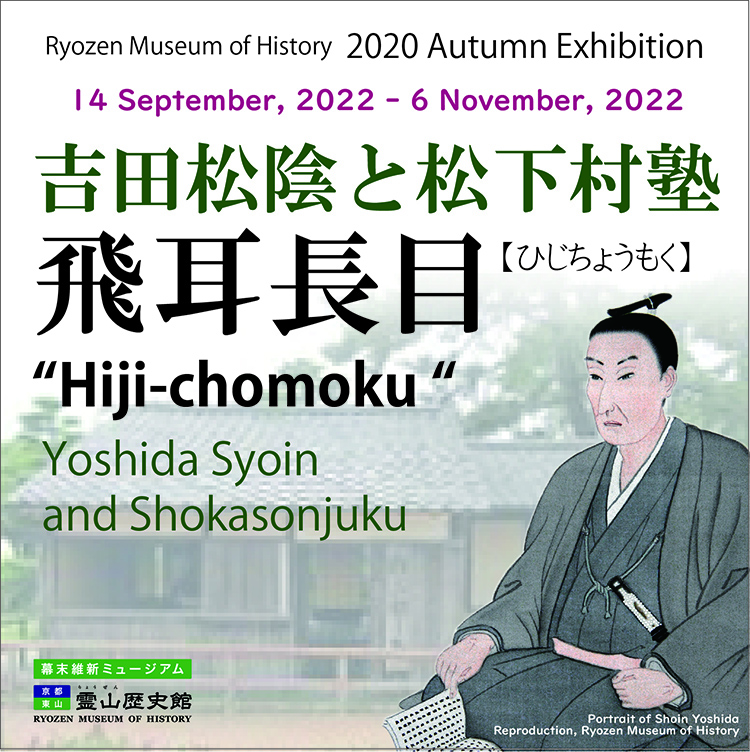
Autumn Exhibition
“Hiji-chomoku“ Yoshida Syoin and Shoukasonjuku
Shoin Yoshida insists that “Hiji-chomoku” is important. This means that “accurate information is necessary to take action, and we must be sensitive to distant things with our ears and eyes,” and it is also applicable to the modern information society.
In this special exhibition, we will display materials about Shoin Yoshida and his students, and approach the real image.
14 September, 2022 -6 November, 2022
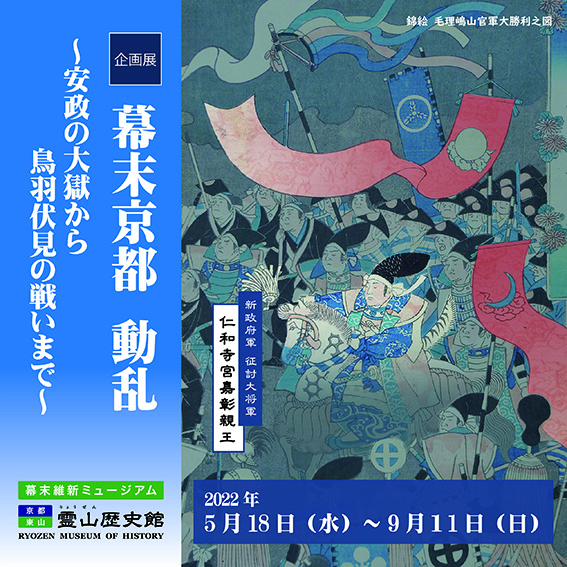
Summer Exhibition
Kyoto upheaval at the end of the Edo period -From Ansei Purge to the Battle of Toba-Fushimi-
Kyoto was the capital for 1200 years from ancient times to the Middle Ages. However, in the Edo period, the political center moved to Edo, where the shogun was. And the economic center moved to Osaka, which is called “the kitchen of the world”.
At the end of the Edo period, Kyoto became a political center again. In this exhibition, we will unravel the history of the turmoil in Kyoto at the end of the Edo period.
18 May, 2022 -11 September, 2022
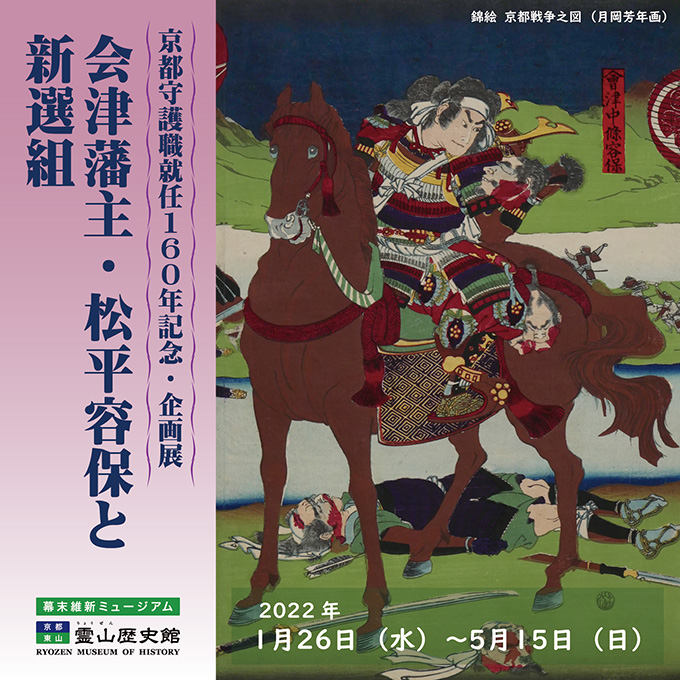
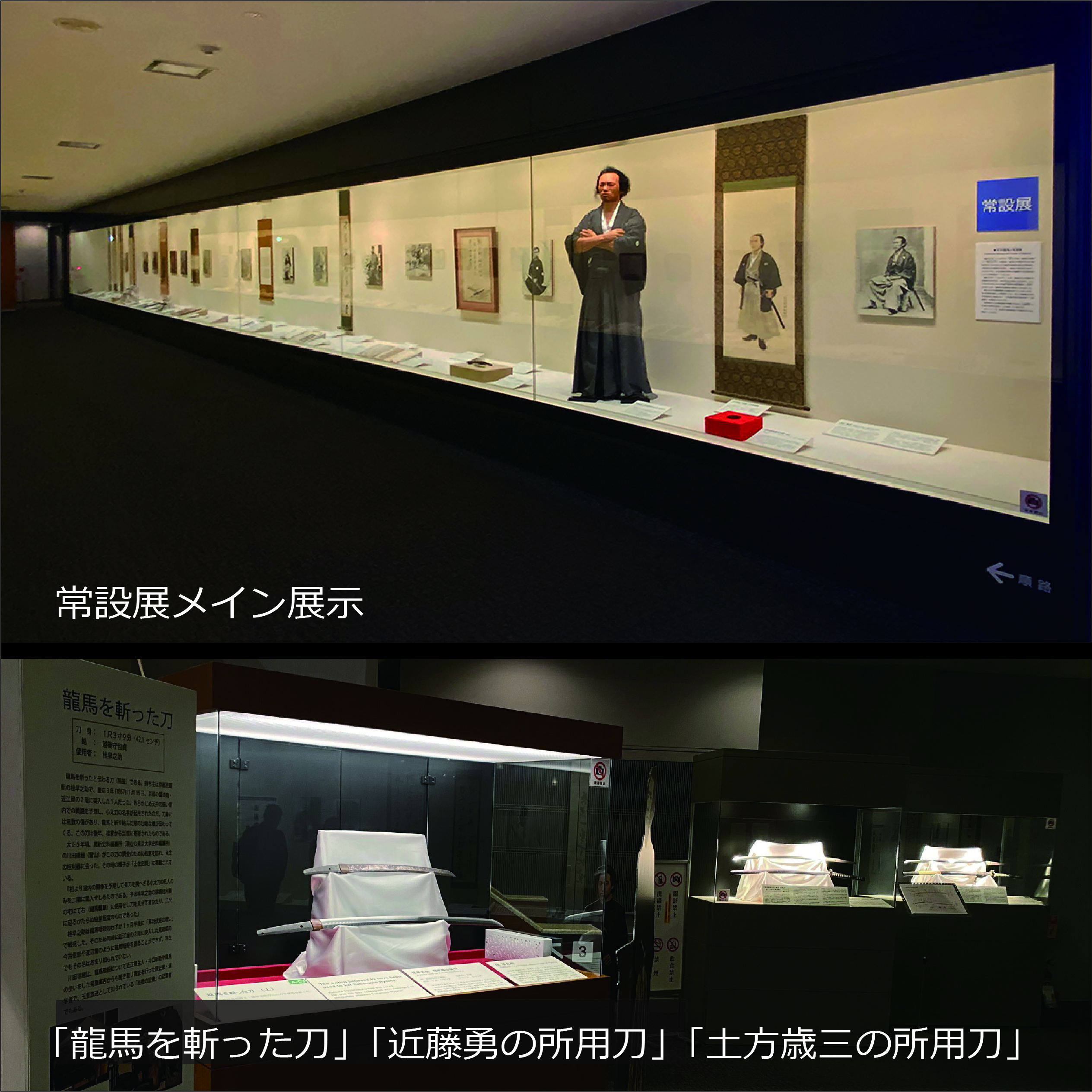
Permanent exhibition
In Kyoto, where both the supporters and opposers of the shogunate were active, valuable materials are always on display based on the idea of understanding the history of the Bakumatsu Restoration from both perspectives.
■Konosuke Matsushita and Ryozen [newly displayed]
We will exhibit valuable materials related to the establishment of the Ryozen Museum and Konosuke Matsushita (Panasonic founder), the first director of the museum.
■ Boshin War Picture Scroll / Shinsengumi soldier List
All three volumes of the spectacular “Boshin War Record Picture Scroll” or three types of “Shinsengumi soldier List” will be exhibited alternately.
■ Permanent main exhibition on the 2nd floor
Zone exhibitions are mainly focused on Ryoma Sakamoto and Shinsengumi / Shogunate.
* On the 1st floor, “the Sword that killed Ryoma”, “Kondo Isami’s sword”, and “Hijikata Toshizo’s sword” are also exhibited, which is a representative collection of the museum.
2021 Exhibitions
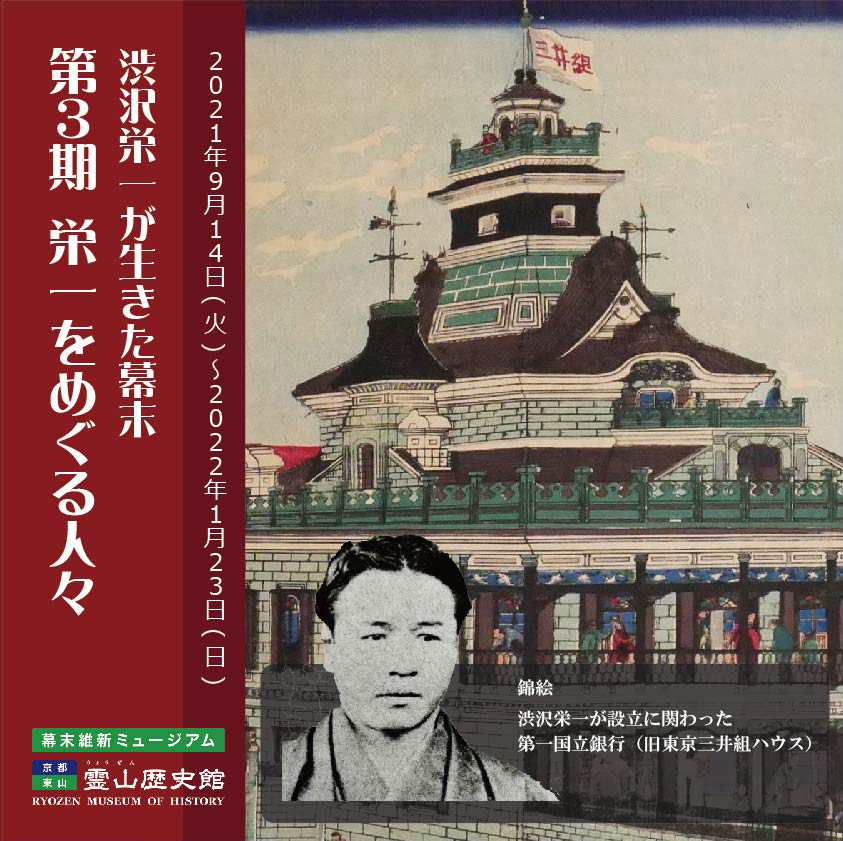
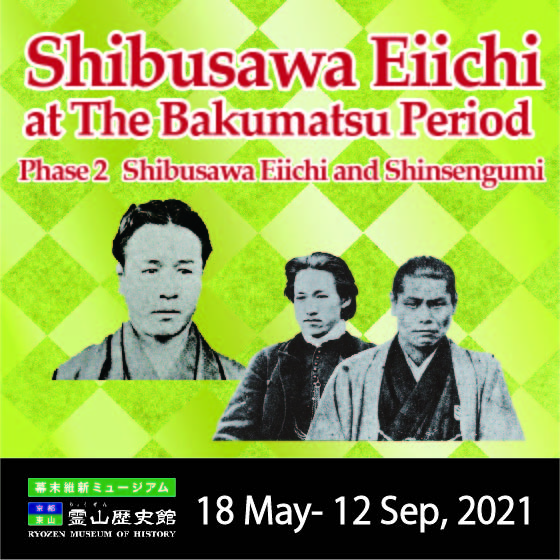
Summer Exhibition
Shibusawa Eiichi and Shinsengumi
Shibusawa Eiichi was a patriot in rich farmers.
However, Shibusawa served Tokugawa Yoshinobu in 1864.
And Shibusawa became a shogun’s retainer when Yoshinobu became a general.
It was a big turn that a patriot of the anti-Shogunate became a shogun’s retainer.
Shibusawa became the subordinates of the military magistrate.
And he worked in Kyoto.
Shibusawa met Kondo Isami of Shinsengumi in 1866.
He arrested Osawa Genjiro with Hijikata Toshizo.
The arrest went well, and Shibusawa appreciated Kondo and Hijikata.
We display documents such as Tokugawa Yoshinobu and Kondo Isami ,Hijikata Toshizo,Kido Takayoshi,Saigou Takamori connected with Shibusawa.
18 May, 2021 -12 September, 2021
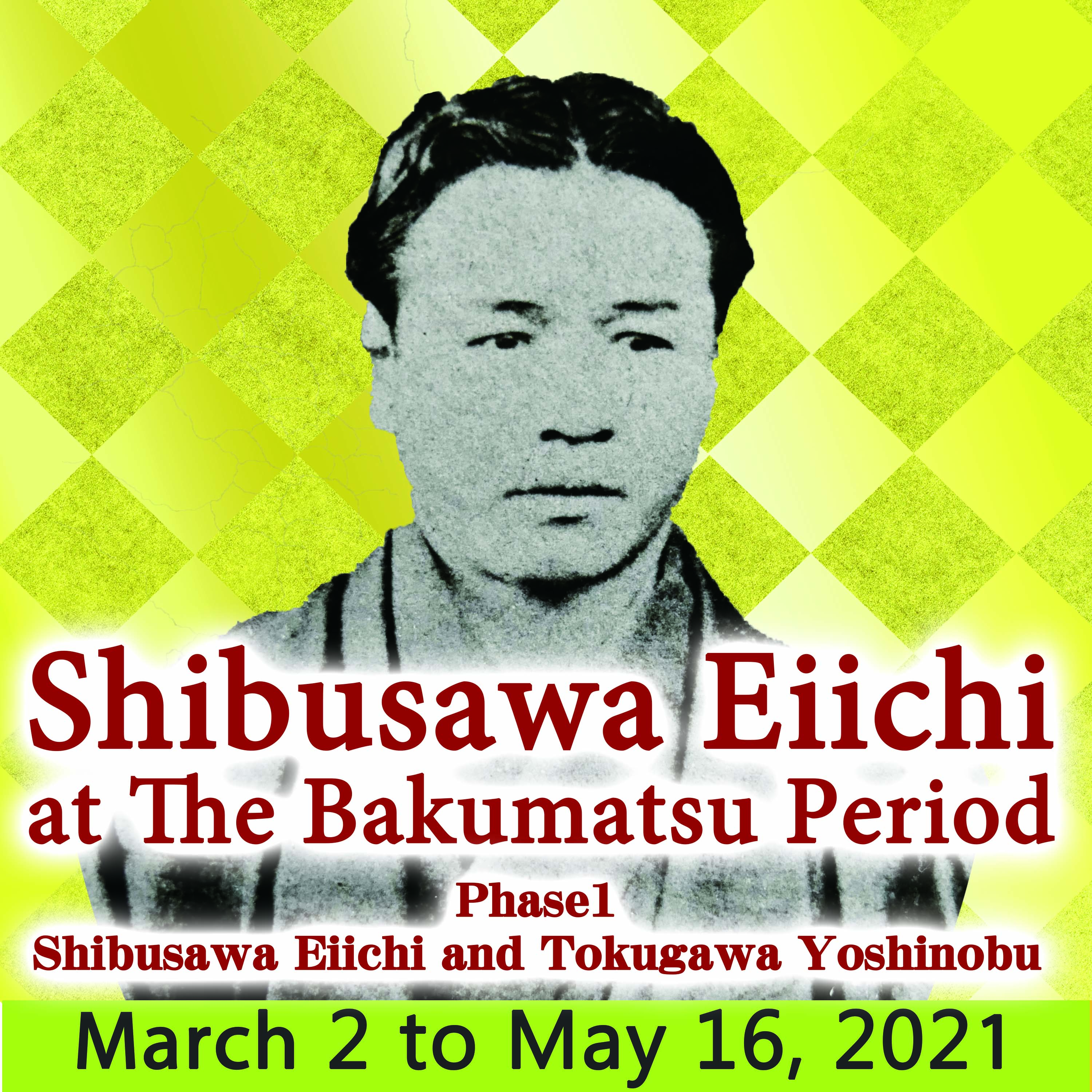
Spring Exhibition
"Shibusawa Eiichi at the Bakumatsu Period"
Phase1 : Shibusawa Eiichi and Tokugawa Yoshinobu
Shibusawa Eiichi was engaged in 500 companies and establishment of 600 organizations. He is called “father of the modern Japanese capitalism”. In addition, he made an effort for social work.
Shibusawa was born as a child of the powerful farmer by The Bakumatsu Period.
He did fencing ascetic practices and became a patriot with a thought of “Nationalistic Imperialism”.
Shibusawa served Tokugawa Yoshinobu in 1864. And Shibusawa became a shogun’s retainer when Yoshinobu took office as a general. In 1867, he became the member of the Shogunate mission and went to France. Shibusawa knew the capitalism in France and was shocked. He was going to change the country by commerce.
We display the documents such as Tokugawa Yoshinobu and Kondo Isami, Hijikata Toshizo, Kido Takayoshi, Saigo Takamori, who were related to Shibusawa.
March 2,2021 to May 16,2021
2020 Exhibitions
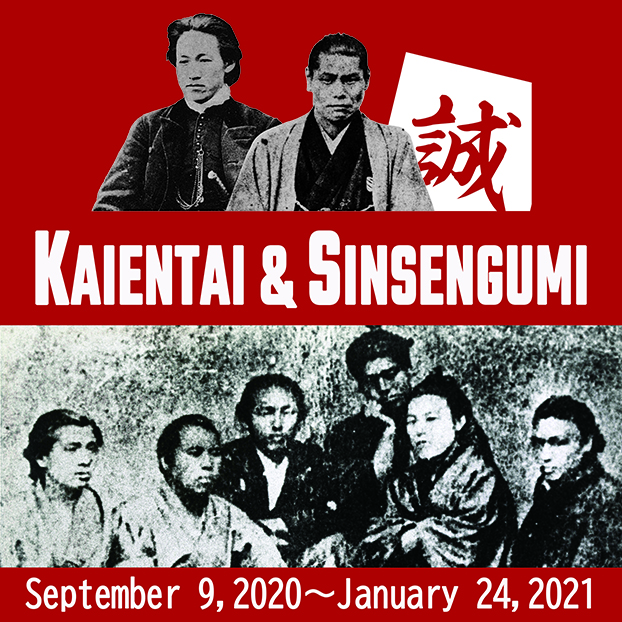
“Kaientai and Shinsengumi”
Sakamoto Ryoma formed Kameyama company to Nagasaki in 1865. The company traded for the settlement of Satsuma Domain and the Choshu Domain. Ryoma became a captain of Kaientai in 1867.
In 1863, a lordless samurai group of the Shogunate entered Kyoto. Part remained in Kyoto, and formed a new samurai group in Mibu. They were given the name of Shinsengumi by the Imperial Court for their work in the Coup of August 18.
They were very advanced groups. We display a document of Kaientai and Shinsengumi.
September 9,2020 to January 24,2021

Special Summer Exhibition
"The Shinsengumi and the Boshin War"
In June 1867, the Shinsengumi’s members were elevated to the status of direct vassals of the shogun. Soon thereafter the Bakufu collapsed and the Boshin War broke out. Yet the Shinsengumi remained loyal both to the Tokugawa clan and to Aizu Domain. Drawing primarily on the records of the Shinsengumi, this exhibition looks at the Battle of Toba-Fushimi and the Boshin War.
June 2,2020 to September 6,2020
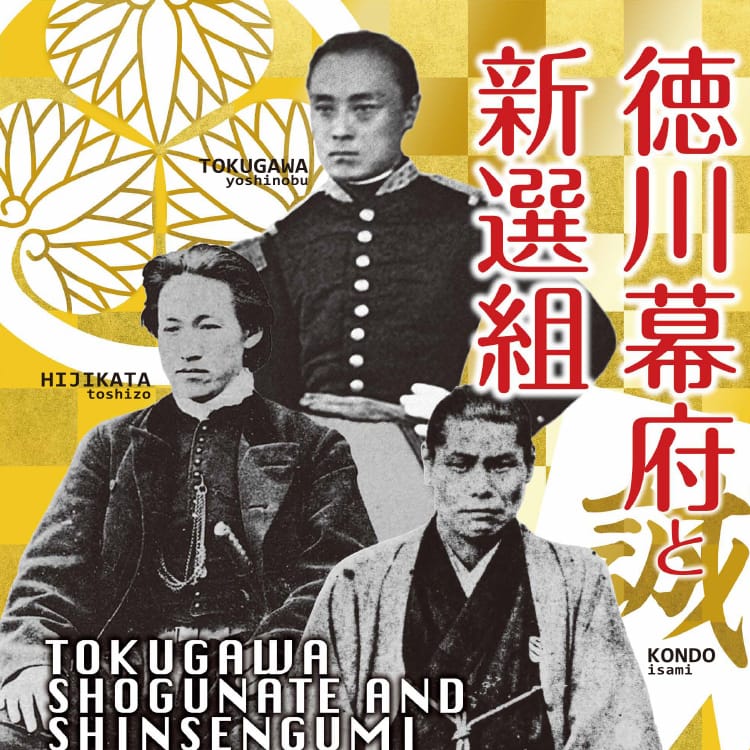
Special Spring Exhibition
“Tokugawa Shogunate and Shinsengumi”
At the Bakumatsu period, Kyoto became a political center. In 1862 The Tokugawa Shogunate established “Kyoto Shugoshoku”, which means a guardian system in Kyoto. And the Shogunate appointed Matsudaira Katamori, the Lord of Aizu, to the position. Shinsengumi played an active part in the Ikedaya incident in 1864, and was promoted to the staff of the shogunate in 1867. In this exhibition, we will look at the history of the Tokugawa Shogunate seen from the Shogunate side, focusing on materials about the shogunate, Kyoto Shugoshoku, Shinsengumi, and the guard force in Kyoto.
January 29, 2020 to May 17, 2020
2019 Exhibitions

120 Years Since the Death of Katsu Kaishu
“The People Around Sakamoto Ryoma and Katsu Kaishu”
In 2019, the 120th anniversary of the death of Katsu Kaishu is being
remembered.
The exhibit features materials relating to Katsu Kaishu, who promoted
the establishment of a modern Japanese Navy; Sakamoto Ryoma, who exerted himself to
work for Katsu; and the people around them, as well as the Shinsen-gumi. They
provide a real picture of the Last Days of Tokugawa Shogunate.
October 2, 2019 to January 26, 2020
